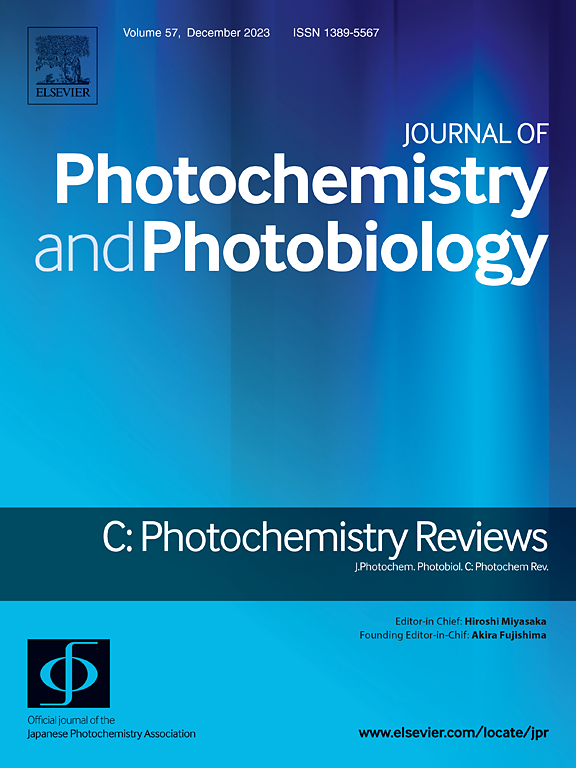Activatable chemiluminescence enabled external-light-free photodynamic therapy: From mechanisms, structural designs to theranostics
IF 13.1
1区 化学
Q1 CHEMISTRY, PHYSICAL
Journal of Photochemistry and Photobiology C: Photochemistry Reviews
Pub Date : 2025-10-04
DOI:10.1016/j.jphotochemrev.2025.100724
引用次数: 0
Abstract
Photodynamic therapy (PDT) is a noninvasive, clinically approved technique used to treat various conditions, including bacterial infections, several skin diseases, and cancers. It typically undergoes the external-light-irradiation of a specific photosensitizer to generate reactive oxygen species. These species cause damage to surrounding tissue and lead to cell death. However, the limited penetration depth of external light through biological tissues significantly restricts the effectiveness of PDT for deep lesions and tissues. Chemiluminescence (CL) is an emission phenomenon triggered by a chemical reaction, rather than by light excitation as is the case with conventional fluorescence. The construction of CL-initiated PDT agents provides a potential external-light-irradiation-free approach for deep-tissue PDT. Significant advances have recently been achieved in the construction of CL-initiated nano- and molecular-PDT agents through either noncovalent or covalent combination of the CL unit with the photosensitizer. This review highlights recent advancements in CL-mediated PDT for bioimaging and tumor treatment, discussing the underlying mechanisms, structural design principles, and results from in vitro cellular and in vivo animal investigations. Moreover, the current challenges and future outlook for CL-mediated PDT in tumor theranostics are also discussed.
可活化化学发光使外部无光光动力治疗:从机制,结构设计到治疗学
光动力疗法(PDT)是一种无创的、经临床批准的技术,用于治疗各种疾病,包括细菌感染、几种皮肤病和癌症。它通常经过特定光敏剂的外部光照射以产生活性氧。这些物种对周围组织造成损害并导致细胞死亡。然而,外部光通过生物组织的穿透深度有限,极大地限制了PDT对深部病变和组织的有效性。化学发光(CL)是一种由化学反应引起的发射现象,而不是像传统荧光那样由光激发引起的。cl引发的PDT试剂的构建为深部组织PDT提供了一种潜在的无外光照射的方法。近年来,通过CL单元与光敏剂的非共价或共价组合,在构建CL引发的纳米和分子pdt试剂方面取得了重大进展。本文综述了cl介导的PDT用于生物成像和肿瘤治疗的最新进展,讨论了潜在的机制、结构设计原则以及体外细胞和体内动物研究的结果。此外,还讨论了cl介导的PDT在肿瘤治疗中的当前挑战和未来前景。
本文章由计算机程序翻译,如有差异,请以英文原文为准。
求助全文
约1分钟内获得全文
求助全文
来源期刊
CiteScore
21.90
自引率
0.70%
发文量
36
审稿时长
47 days
期刊介绍:
The Journal of Photochemistry and Photobiology C: Photochemistry Reviews, published by Elsevier, is the official journal of the Japanese Photochemistry Association. It serves as a platform for scientists across various fields of photochemistry to communicate and collaborate, aiming to foster new interdisciplinary research areas. The journal covers a wide scope, including fundamental molecular photochemistry, organic and inorganic photochemistry, photoelectrochemistry, photocatalysis, solar energy conversion, photobiology, and more. It provides a forum for discussing advancements and promoting collaboration in the field of photochemistry.

 求助内容:
求助内容: 应助结果提醒方式:
应助结果提醒方式:


